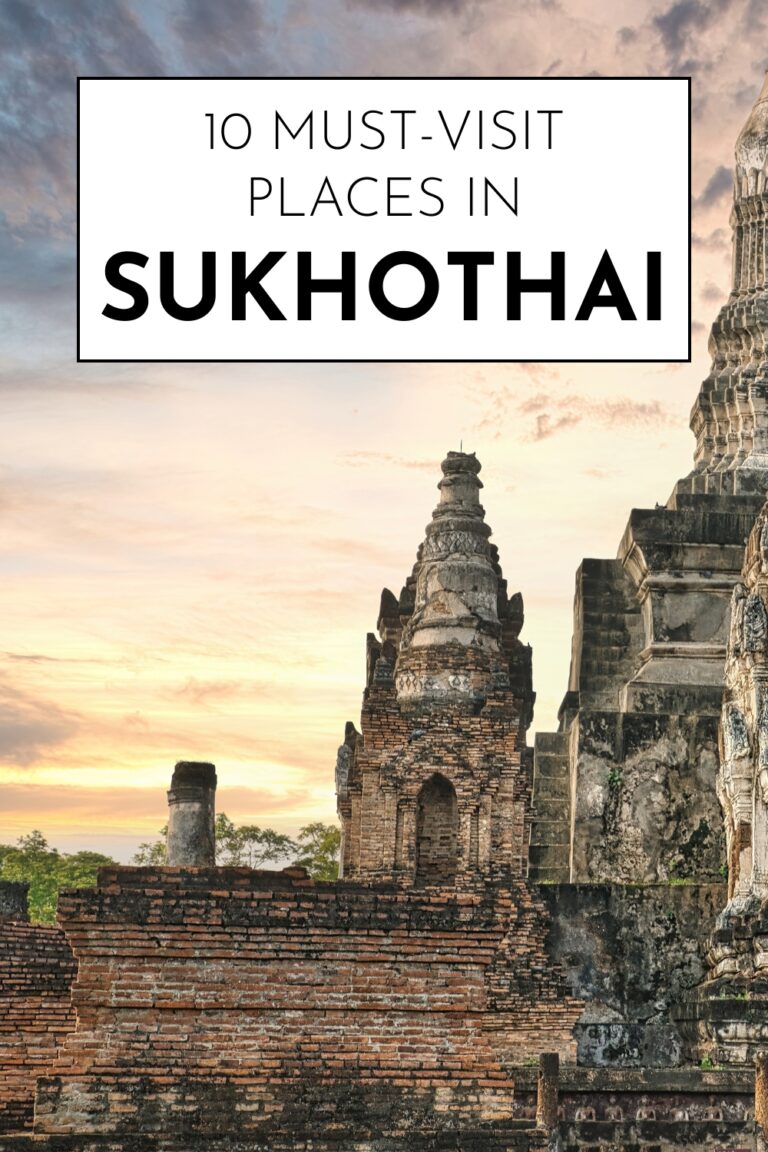Sukhothai, located in north-central Thailand, stands as the cradle of Thai civilization and one of the country’s most culturally significant destinations. This ancient city served as the capital of the first Kingdom of Siam from 1238 to 1438, marking the birth of Thai identity, art, and culture.
Today, Sukhothai offers visitors an extraordinary journey through 800 years of history, where ancient temple ruins tell stories of kings and kingdoms. The UNESCO World Heritage Site preserves some of Southeast Asia’s most magnificent Buddhist architecture, while the surrounding region showcases traditional Thai life that has remained largely unchanged for centuries.
The province combines historical exploration with natural beauty, featuring lotus-filled ponds, ancient city walls, and peaceful countryside dotted with traditional villages. From the iconic silhouette of Wat Mahathat to hidden forest temples, Sukhothai provides an authentic glimpse into Thailand’s golden age.
Whether you’re passionate about history, architecture, Buddhism, or simply seeking a peaceful escape from modern life, Sukhothai delivers profound experiences. Let’s explore the ten essential destinations that make this ancient kingdom a must-visit location for travelers seeking Thailand’s cultural heart.
1. Sukhothai Historical Park – Ancient Capital Restored
Sukhothai Historical Park encompasses the ruins of the ancient city of Sukhothai, preserving 193 temple ruins across 70 square kilometers. This UNESCO World Heritage Site represents the pinnacle of early Thai art and architecture, showcasing the creativity and spiritual devotion of the first Thai kingdom.
Royal Palace Complex and Temple Ruins
The park’s central zone contains the most important temples and the former royal palace complex. Wat Mahathat, the spiritual center of the kingdom, features the iconic seated Buddha silhouette that has become Sukhothai’s symbol. The temple’s central chedi rises majestically above surrounding smaller stupas and Buddha images.
Wat Sa Si sits on an island in the middle of an ancient reservoir, creating one of Thailand’s most photographed temple scenes. The temple’s graceful lines reflect perfectly in still waters, especially during early morning hours when mist creates an ethereal atmosphere.
The royal palace foundations reveal the layout of royal quarters, audience halls, and administrative buildings. While only stone foundations remain, interpretive signs help visitors understand the complex’s original grandeur and the daily life of Sukhothai’s rulers.
Best visiting time: Early morning (6:00-8:00 AM) for soft lighting and fewer crowds
Transportation: Bicycle rental available at park entrance
Special events: Loy Krathong Festival in November features spectacular light and sound shows
Cycling Routes and Photography Opportunities
The park’s flat terrain and well-maintained roads make cycling the ideal way to explore temple ruins spread across large distances. Bicycle rental shops at the entrance provide maps highlighting the most significant temples and suggested routes.
Three main zones offer different experiences: the central zone contains the most important temples, the northern zone features forest temples with fewer crowds, and the western zone showcases temples built into hillsides with panoramic views.
Photography enthusiasts find endless opportunities, from sunrise silhouettes at Wat Mahathat to lotus blooms in ancient ponds. The golden hour before sunset transforms ancient stones into warm, glowing monuments that capture Sukhothai’s timeless beauty.
2. Wat Mahathat – Spiritual Heart of Ancient Sukhothai
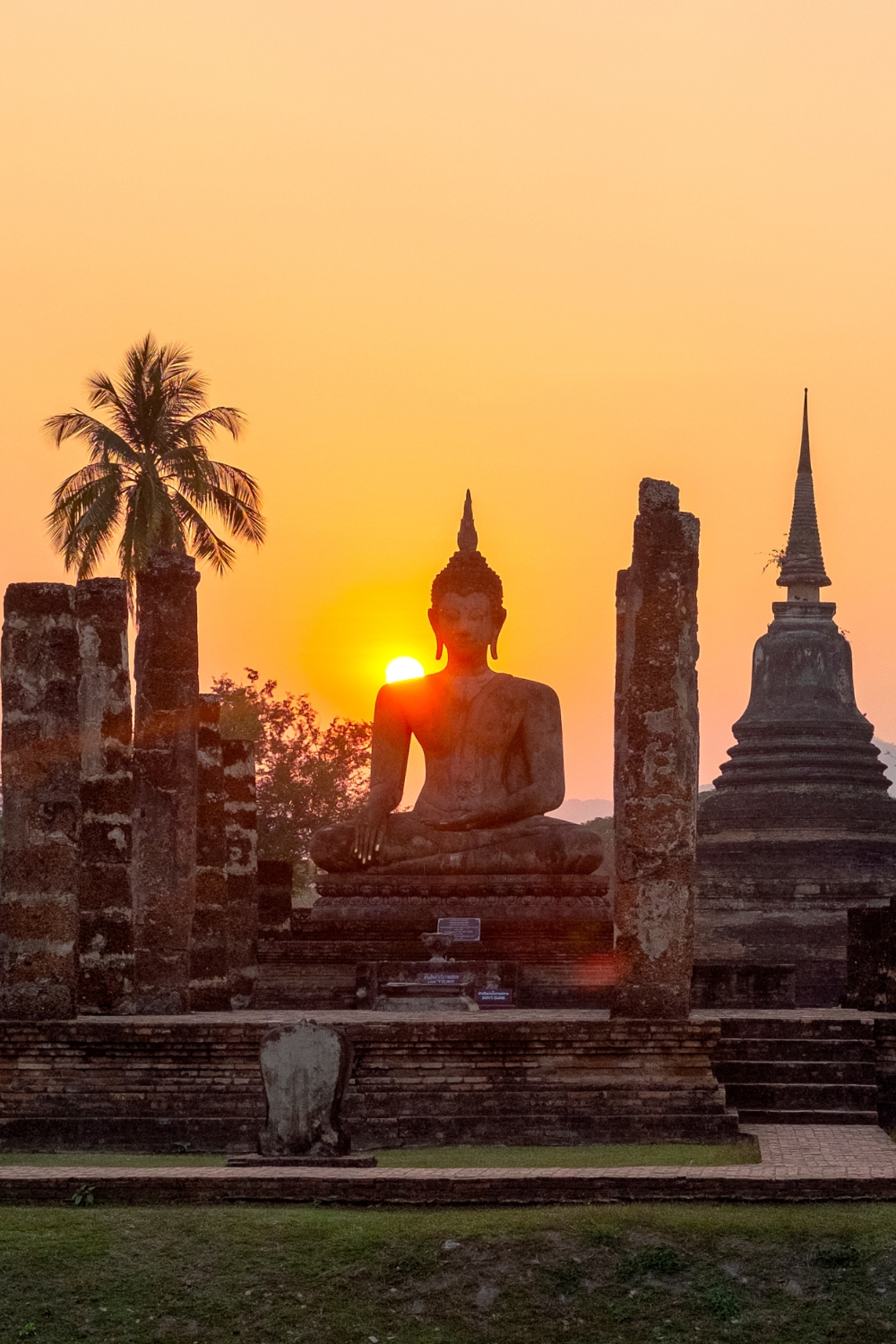
Wat Mahathat served as the most important temple in the Sukhothai Kingdom and remains the spiritual centerpiece of the historical park. This magnificent complex demonstrates the height of Sukhothai artistic achievement and religious devotion.
Central Chedi and Buddha Images
The temple’s central chedi rises 8 meters high and represents Mount Meru, the center of the Buddhist universe. Surrounding the main structure, smaller chedis contain relics and ashes of royal family members and important monks, creating a sacred landscape of stupas and shrines.
Over 200 Buddha images in various postures once filled the temple complex. Many remain in excellent condition, showcasing the distinctive Sukhothai style that combines Khmer influences with emerging Thai artistic sensibilities. The famous walking Buddha images demonstrate the grace and fluidity that characterize Sukhothai sculpture.
The temple’s layout follows ancient Buddhist architectural principles, with the main chedi oriented toward cardinal directions and surrounded by smaller structures that create a harmonious sacred space. Stone pillars mark the locations of wooden buildings that once housed monks and served ceremonial functions.
Historical Significance and Royal Connections
King Ramkhamhaeng, Sukhothai’s most famous ruler, likely commissioned Wat Mahathat’s construction in the late 13th century. The temple served as the kingdom’s religious center, where royal ceremonies, Buddhist festivals, and important state functions took place.
Archaeological excavations have uncovered artifacts including gold jewelry, ceramic pieces, and religious objects that provide insight into Sukhothai’s wealth and cultural sophistication. These discoveries are displayed in the nearby Ramkhamhaeng National Museum.
The temple’s Sanskrit name means “Great Relic Temple,” indicating its importance as a repository for sacred Buddhist relics. Pilgrims from across Southeast Asia visited Wat Mahathat to pay respects to these holy objects and participate in religious ceremonies.
3. Wat Si Chum – Home of the Giant Buddha

Wat Si Chum houses one of Thailand’s most impressive Buddha images, a massive seated figure that has inspired awe and devotion for over 700 years. This temple demonstrates Sukhothai’s architectural ingenuity and spiritual ambition.
The Phra Achana Buddha Image
The enormous Buddha image, known as Phra Achana, measures 15 meters high and 11 meters wide, making it one of Thailand’s largest ancient Buddha statues. The figure’s serene expression and graceful hand position create a sense of peace and compassion that moves visitors to quiet contemplation.
Built from brick and stucco, the Buddha image fills almost the entire interior of the temple’s main building, called a mondop. Architects designed the structure specifically to house this colossal figure, with walls rising around the statue to create an intimate encounter between visitors and the sacred image.
The Buddha’s right hand displays the “calling the earth to witness” mudra, representing the moment of Buddha’s enlightenment when he called upon the earth goddess to testify to his spiritual achievements. This gesture holds particular significance in Thai Buddhism and appears frequently in Sukhothai art.
Architectural Innovation and Hidden Staircase
The mondop’s thick walls contain a hidden staircase that allowed monks to climb above the Buddha image for maintenance and ceremonial purposes. This architectural feature demonstrates the sophisticated engineering skills of Sukhothai builders.
Small openings in the upper walls create dramatic lighting effects as sunlight streams across the Buddha’s face throughout the day. These carefully planned openings enhance the spiritual atmosphere and highlight different aspects of the statue’s features as the sun moves across the sky.
The temple’s simple exterior contrasts dramatically with the overwhelming presence of the Buddha image inside, creating a powerful surprise for first-time visitors. This architectural approach focuses attention entirely on the sacred figure rather than decorative elements.
4. Wat Saphan Hin – Hilltop Temple with Panoramic Views
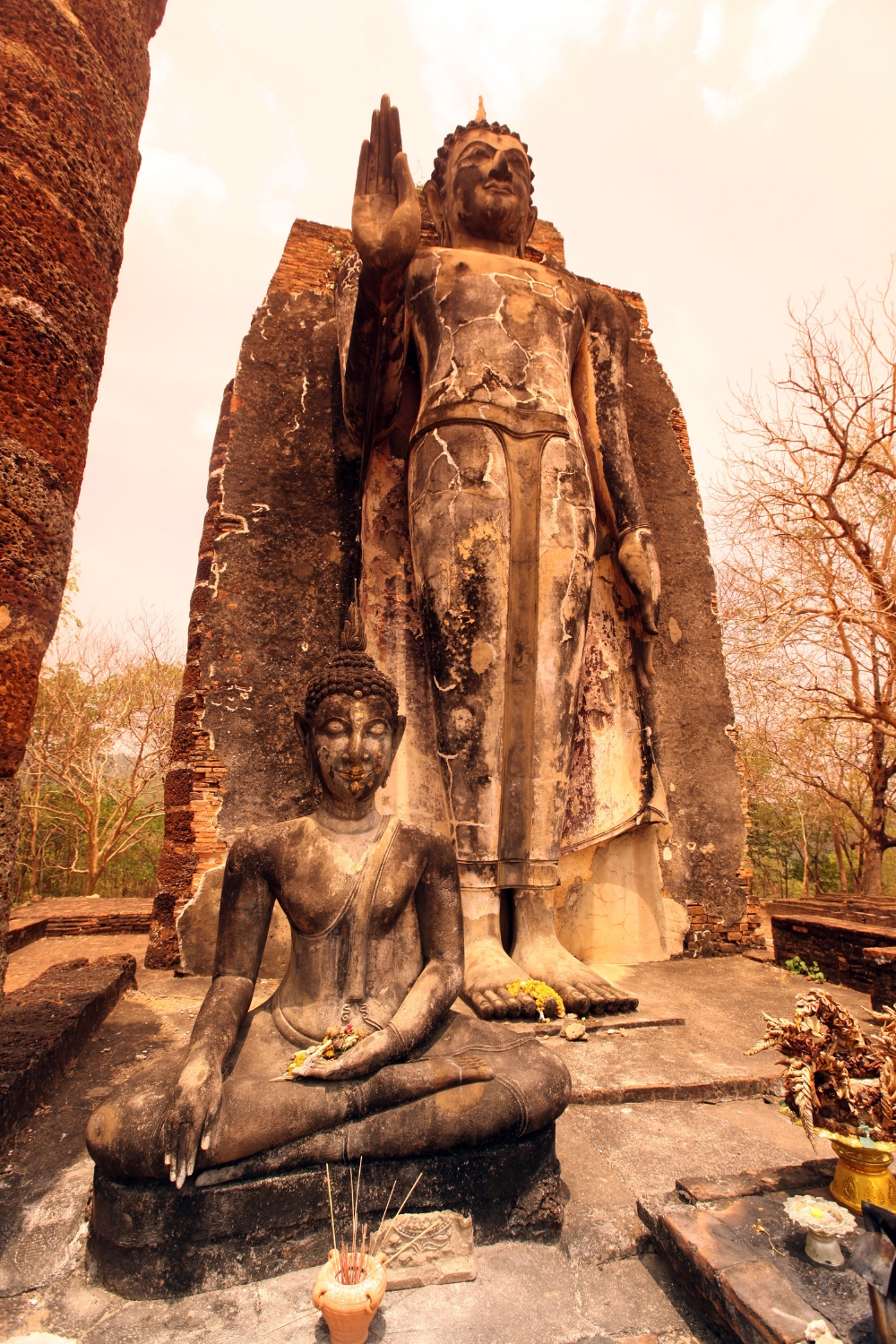
Wat Saphan Hin, meaning “Stone Bridge Temple,” sits atop a hill 3 kilometers west of the main historical park. This temple offers spectacular views of the Sukhothai plains and houses an impressive standing Buddha image that can be seen from great distances.
Standing Buddha and Stone Pathway
The temple’s main attraction is a 12.5-meter tall standing Buddha image that faces east toward the ancient city. This monumental figure represents the walking Buddha pose characteristic of Sukhothai art, though the statue depicts a standing rather than walking position.
A stone pathway, from which the temple takes its name, leads up the hillside to the temple ruins. This ancient road demonstrates the engineering skills of Sukhothai builders who created durable infrastructure to access hilltop temple sites.
The climb to Wat Saphan Hin takes about 20 minutes through forest paths and stone steps. The moderate hike rewards visitors with cooling breezes, forest sounds, and gradually expanding views of the countryside below.
Sunset Views and Natural Setting
The temple’s elevated position makes it one of Sukhothai’s best sunset viewing locations. As the sun sets behind distant mountains, the ancient city spreads below like a vast archaeological garden dotted with temple spires and ancient ponds.
The hilltop location provides a bird’s-eye perspective of Sukhothai’s urban planning, revealing how ancient engineers used natural water sources and defensive positions to create a well-organized capital city. Rice fields, lotus ponds, and village settlements create a patchwork landscape that has changed little over centuries.
Wildlife inhabits the forested hillsides, including various bird species, butterflies, and small mammals. Early morning visits offer the best opportunities for wildlife sightings along with comfortable temperatures for the uphill walk.
5. Ramkhamhaeng National Museum – Treasures of the Ancient Kingdom
The Ramkhamhaeng National Museum houses the most comprehensive collection of Sukhothai artifacts, artwork, and historical objects. This modern facility provides essential context for understanding the ruins and appreciates the sophisticated culture of the ancient kingdom.
Sukhothai Art and Sculpture Collection
The museum displays over 1,500 artifacts including Buddha images, ceramics, bronze objects, and architectural elements recovered from temple excavations. The sculpture collection showcases the evolution of Sukhothai artistic style from early Khmer influences to distinctly Thai expressions.
Bronze Buddha images demonstrate the technical mastery of Sukhothai metalworkers who created graceful figures with flowing robes and serene expressions. These portable images were used in private devotions and smaller temple shrines throughout the kingdom.
Ceramic artifacts include both functional pottery and decorative pieces that reveal daily life in ancient Sukhothai. Glazed ceramics show Chinese influences from active trade relationships, while local pottery maintains traditional Thai forms and decorative motifs.
Historical Documents and Archaeological Discoveries
The famous Ramkhamhaeng Inscription, considered the earliest example of Thai script, is displayed in a place of honor. This stone inscription from 1292 describes King Ramkhamhaeng’s benevolent rule and provides invaluable insights into Sukhothai society, economics, and governance.
Archaeological findings include gold jewelry, religious amulets, and personal items that illustrate the wealth and cultural sophistication of Sukhothai’s inhabitants. These objects demonstrate connections with other Southeast Asian kingdoms and reveal the extent of trade networks.
Interactive displays and detailed explanations help visitors understand the significance of artifacts and their connections to specific temples and historical periods. English-language information makes the collection accessible to international visitors seeking deeper understanding of Sukhothai culture.
Operating hours: 9:00 AM – 4:00 PM, closed on Mondays
Audio guides: Available in Thai and English
Photography: Allowed in most areas, flash photography prohibited
6. Si Satchanalai Historical Park – Sister City Ruins
Si Satchanalai Historical Park preserves the ruins of Sukhothai’s sister city, located 50 kilometers north of the main historical park. This less-visited site offers a more intimate exploration of ancient temples surrounded by rural countryside and traditional villages.
Wat Chang Lom and Elephant-Decorated Chedi
Wat Chang Lom features a distinctive chedi decorated with elephant sculptures that support the main structure. This architectural style, unique to the Sukhothai period, symbolizes the strength and stability that elephants represented in Thai culture.
The temple’s 39 elephant sculptures, though weathered by centuries of monsoons, retain enough detail to appreciate the skill of ancient artisans. Each elephant displays slightly different poses and expressions, suggesting individual artistic interpretation rather than mass production.
The chedi’s bell-shaped design follows Sri Lankan Buddhist architecture, reflecting Sukhothai’s connections with other Theravada Buddhist kingdoms. This international influence demonstrates the cosmopolitan nature of medieval Thai culture and religious exchange.
Traditional Pottery Village and Cultural Experiences
The nearby village of Ban Ko Noi continues the ceramic-making traditions that made Si Satchanalai famous throughout Southeast Asia. Local artisans still use ancient techniques to create pottery similar to pieces found in archaeological excavations.
Visitors can observe pottery-making processes, from clay preparation through firing in traditional kilns. Several workshops offer hands-on experiences where travelers can try throwing pots or painting ceramic pieces under expert guidance.
The village maintains a peaceful rural atmosphere with traditional wooden houses, Buddhist shrines, and rice fields extending to forest-covered hills. This setting provides authentic glimpses of Thai village life that has remained largely unchanged for generations.
7. Wat Traphang Ngoen – Temple of the Silver Pond
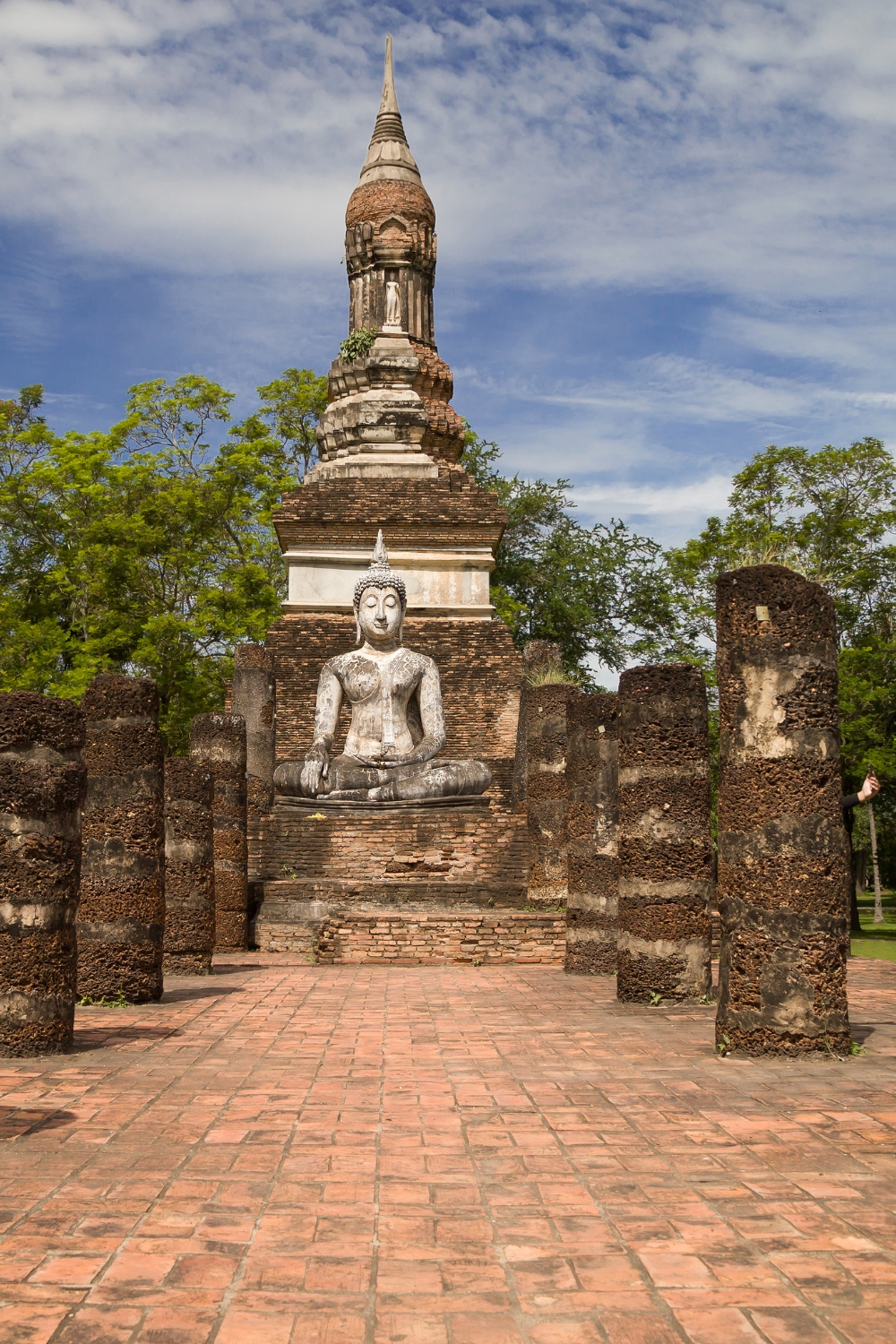
Wat Traphang Ngoen, located on an island in an ancient reservoir, creates one of Sukhothai’s most romantic and photogenic temple settings. The temple’s name refers to the silver-like reflections created by moonlight on the surrounding water.
Island Temple and Lotus Blooms
The temple sits on a small island accessible by a reconstructed wooden bridge that follows the path of the original ancient causeway. This location demonstrates how Sukhothai architects incorporated natural water features into temple designs to create spiritual and aesthetic harmony.
During the rainy season (July-October), lotus flowers bloom across the pond’s surface, creating spectacular displays of pink and white blossoms. Early morning visits reward photographers with perfect reflections and soft lighting that enhances the temple’s romantic atmosphere.
The main chedi displays classic Sukhothai proportions and architectural details, while remaining Buddha images maintain the serene expressions characteristic of the period. The island setting creates an intimate environment for meditation and contemplation.
Photography and Peaceful Contemplation
The temple’s water setting creates exceptional photography opportunities throughout the day as changing light conditions transform reflections and shadows. Sunset visits offer particularly dramatic lighting as the temple silhouette reflects in still water.
The peaceful environment makes Wat Traphang Ngoen an ideal location for quiet contemplation and spiritual reflection. Few tourists visit this temple, providing opportunities for solitary communion with ancient sacred spaces.
Local wildlife includes various bird species, butterflies, and aquatic life that inhabit the pond ecosystem. Patient observers may spot kingfishers, herons, and other water birds that have made the ancient reservoir their home.
8. Sukhothai Walking Street and Night Market – Local Culture and Cuisine
Sukhothai’s Saturday walking street transforms the new city center into a vibrant cultural celebration featuring local food, handicrafts, and traditional performances. This weekly event provides authentic encounters with contemporary Sukhothai culture and community life.
Traditional Food and Regional Specialties
The walking street features dozens of food stalls serving regional specialties that have been passed down through generations. Sukhothai noodle soup, the city’s most famous culinary creation, appears in numerous variations from different family recipes.
Local specialties include khao kriab (steamed rice dumplings), kanom krok (coconut pancakes), and various grilled meats seasoned with regional spice blends. These dishes represent authentic Thai flavors without the modifications often made for tourist palates.
Fresh tropical fruits, traditional sweets, and handmade snacks provide opportunities to sample ingredients and flavors unique to northern Thailand. Friendly vendors often offer tastes and explain preparation methods to curious visitors.
Handicrafts and Cultural Performances
Local artisans display traditional handicrafts including handwoven textiles, wood carvings, ceramic pieces, and jewelry made from local materials. These products represent authentic regional craftsmanship rather than mass-produced tourist souvenirs.
Traditional dance and music performances take place on a central stage, showcasing classical Thai arts that have been preserved and passed down through local cultural groups. These performances provide insights into Thai artistic traditions and their connections to ancient court culture.
The walking street creates a community gathering place where locals socialize, families spend evening time together, and visitors can observe authentic Thai social interactions in a relaxed, festive atmosphere.
Schedule: Saturday evenings, 4:00 PM – 10:00 PM
Location: Charot Withi Thong Road in new Sukhothai city
Transportation: 12 kilometers from historical park, tuk-tuk and songthaew available
9. Wat Chetuphon – Forest Temple Adventure

Wat Chetuphon, located in the historical park’s northern zone, offers a more adventurous temple exploration experience. This forest temple requires a short hike through wooded areas and provides insights into how nature reclaims abandoned sacred spaces.
Hidden Buddha Images and Natural Integration
The temple ruins blend seamlessly with the surrounding forest, where tree roots embrace ancient stones and Buddha images emerge from green vegetation. This natural integration creates a mystical atmosphere that differs dramatically from the manicured central zone temples.
Several Buddha images remain partially hidden by vegetation, creating treasure-hunt experiences for visitors willing to explore off main pathways. These discoveries reward adventurous travelers with intimate encounters with ancient sacred art.
The forest setting demonstrates how Sukhothai’s builders chose locations that harmonized with natural environments rather than dominating landscapes. This approach reflects Buddhist principles of living in harmony with nature.
Wildlife Viewing and Nature Photography
The forested temple environment supports diverse wildlife including various bird species, butterflies, small mammals, and reptiles. Early morning visits offer the best opportunities for wildlife sightings when animals are most active.
Photography opportunities include dramatic contrasts between ancient stonework and lush vegetation, creating images that emphasize the relationship between human creativity and natural processes. Filtered sunlight through forest canopy creates constantly changing lighting conditions.
The peaceful forest setting provides meditation opportunities in a natural environment where ancient monks once practiced their spiritual disciplines. The combination of sacred ruins and natural beauty creates profound spiritual experiences for receptive visitors.
10. Loy Krathong Festival and Cultural Events – Living Traditions
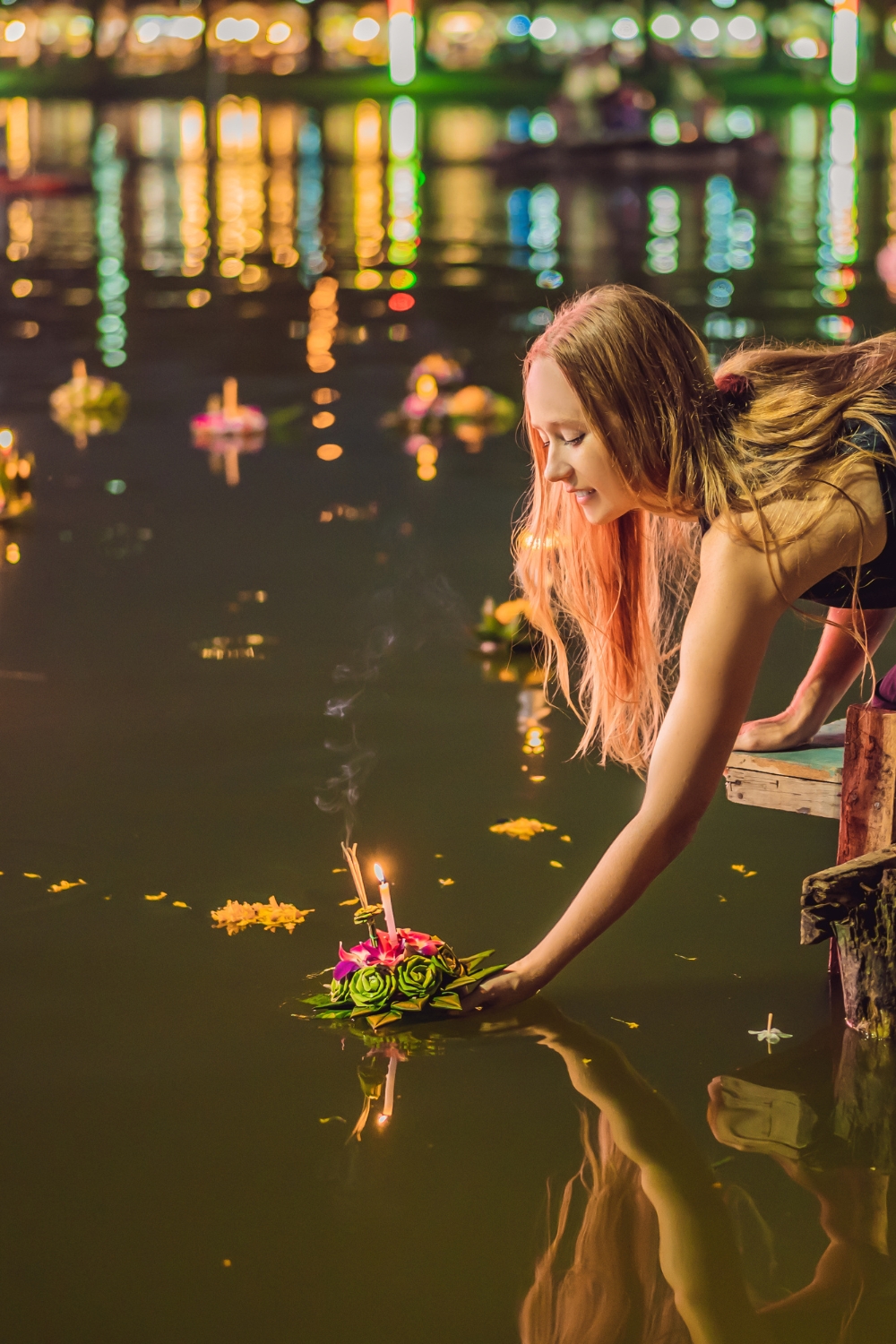
Sukhothai hosts Thailand’s most spectacular Loy Krathong Festival, transforming the ancient ruins into stages for light and sound shows that bring history to life. This annual celebration demonstrates how ancient traditions continue to thrive in modern Thailand.
Historical Light Shows and Cultural Performances
During Loy Krathong (usually November), Sukhothai Historical Park becomes the setting for elaborate light and sound presentations that project historical scenes onto ancient temple walls. These shows recreate the glory of the ancient kingdom using modern technology.
Traditional dance performances featuring hundreds of participants in period costumes take place throughout the historical park. These presentations showcase classical Thai dance forms that originated during the Sukhothai period and remain largely unchanged.
The festival includes traditional craft demonstrations, historical reenactments, and cultural exhibitions that provide immersive experiences of ancient Thai life. Participants wearing traditional costumes create living history tableaux throughout the park.
Floating Lanterns and Spiritual Celebrations
The Loy Krathong tradition of floating decorated baskets on water takes on special meaning in Sukhothai, where ancient ponds and reservoirs provide perfect settings for this spiritual practice. Thousands of candle-lit krathongs create magical scenes across historical park waters.
Visitors can participate in traditional krathong-making workshops using natural materials like banana leaves, flowers, and candles. This hands-on cultural experience connects participants with centuries-old Thai traditions and spiritual practices.
The festival atmosphere combines reverence for Buddhist traditions with celebration of Thai cultural identity, creating experiences that are both spiritually meaningful and joyously festive. International visitors find warm welcomes to participate in ancient traditions.
Festival dates: Usually mid-November during full moon
Advance booking: Recommended for accommodation and special events
Cultural activities: Krathong-making workshops, traditional craft demonstrations
Planning Your Sukhothai Journey
Getting to Sukhothai
Sukhothai is accessible by bus from Bangkok (7 hours), Chiang Mai (5 hours), and other major Thai cities. The nearest airport is in Phitsanulok (1 hour drive), which connects to Bangkok with daily flights. Private car or motorbike rental provides the most flexibility for exploring multiple sites.
Best Time to Visit
The ideal visiting period is November through February when temperatures are comfortable and rainfall minimal. March through May can be extremely hot, while June through October brings monsoon rains that create muddy conditions but also spectacular lotus blooms.
Accommodation Options
Sukhothai offers accommodation ranging from budget guesthouses to boutique resorts designed to complement the historical atmosphere. Several hotels provide traditional Lanna-style architecture and peaceful garden settings that enhance the cultural experience.
Transportation Within Sukhothai
Bicycle rental is the most popular and environmentally friendly way to explore the historical parks. Electric trams provide guided tours of main temples, while motorbike rental allows access to more distant sites like Si Satchanalai.
Essential Travel Tips
Cultural Sensitivity and Temple Etiquette
Dress modestly when visiting temples, covering shoulders and knees even at ruins where no active worship occurs. Remove hats and sunglasses when approaching Buddha images, and avoid pointing feet toward sacred objects.
Photography Guidelines
Photography is generally permitted throughout the historical parks, but avoid using flash near ancient artwork and Buddha images. Climbing on temple structures is prohibited and can damage irreplaceable historical artifacts.
Environmental Responsibility
Stay on designated paths to protect archaeological sites and natural environments. Carry water bottles to avoid purchasing plastic bottles, and dispose of all trash properly to maintain the sites’ beauty for future visitors.
Health and Safety Considerations
Bring sun protection, insect repellent, and plenty of water for outdoor exploration. Wear comfortable walking shoes with good traction for uneven ancient pathways and forest trails.
Conclusion
Sukhothai offers an unparalleled journey through Thailand’s cultural foundations, where ancient stones tell stories of kings, artists, and spiritual seekers who created one of Southeast Asia’s greatest civilizations. From the iconic silhouette of Wat Mahathat to hidden forest temples, every site reveals new insights into Thai identity and Buddhist devotion.
The ancient kingdom’s legacy extends far beyond historical ruins to encompass artistic traditions, spiritual practices, and cultural values that continue shaping modern Thailand. Visitors discover not just archaeological sites but living connections to 800 years of continuous cultural evolution.
Whether exploring temple ruins by bicycle, participating in traditional festivals, or simply sitting quietly beside lotus-filled ponds, Sukhothai provides profound experiences that linger long after departure. The ancient capital’s peaceful atmosphere and spiritual significance create memories that deepen appreciation for Thailand’s cultural richness.
Plan your Sukhothai adventure with respect for its sacred heritage, openness to cultural learning, and appreciation for the dedication required to preserve these treasures for future generations. This remarkable destination will reward thoughtful visitors with insights into the very soul of Thai civilization.
